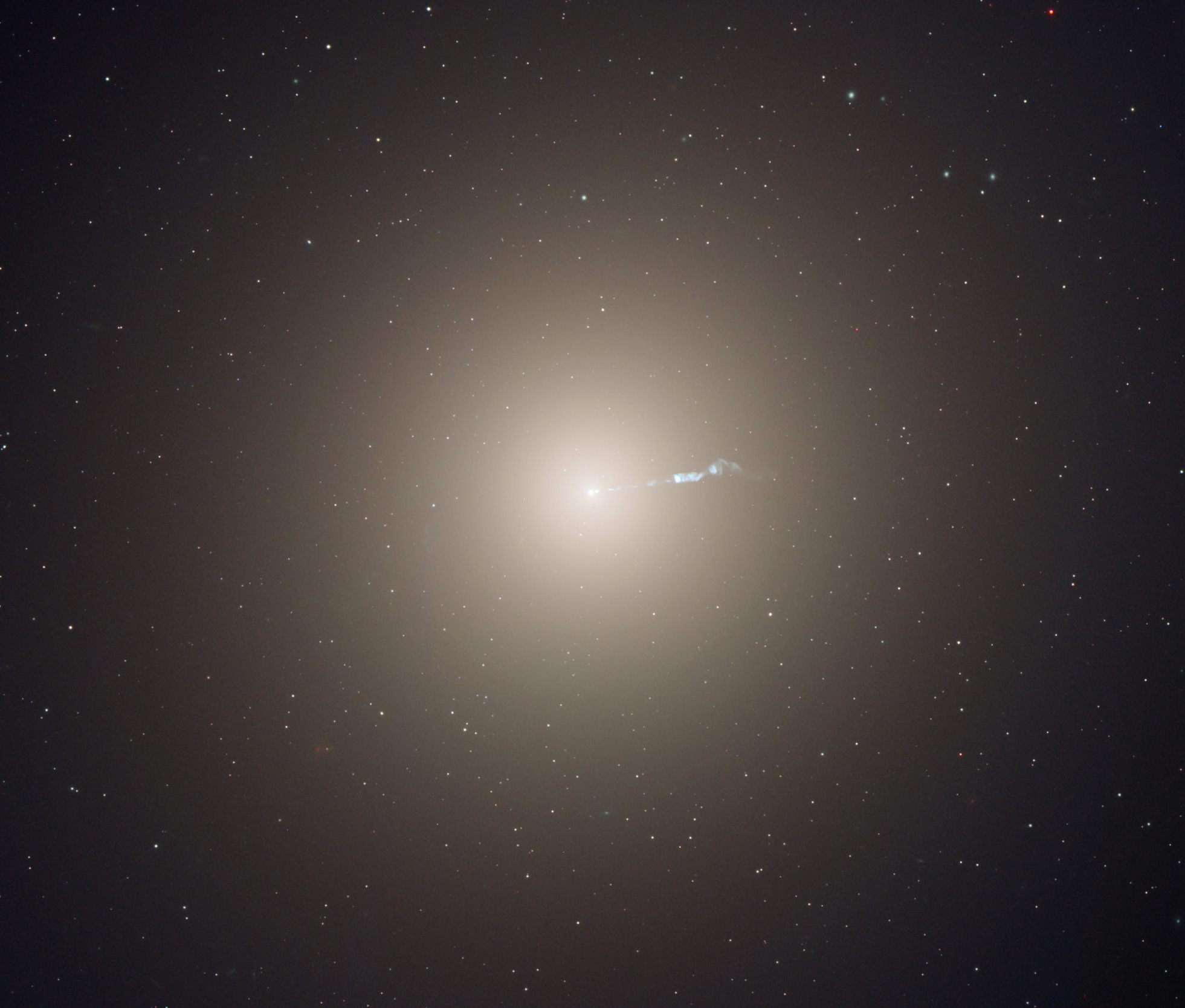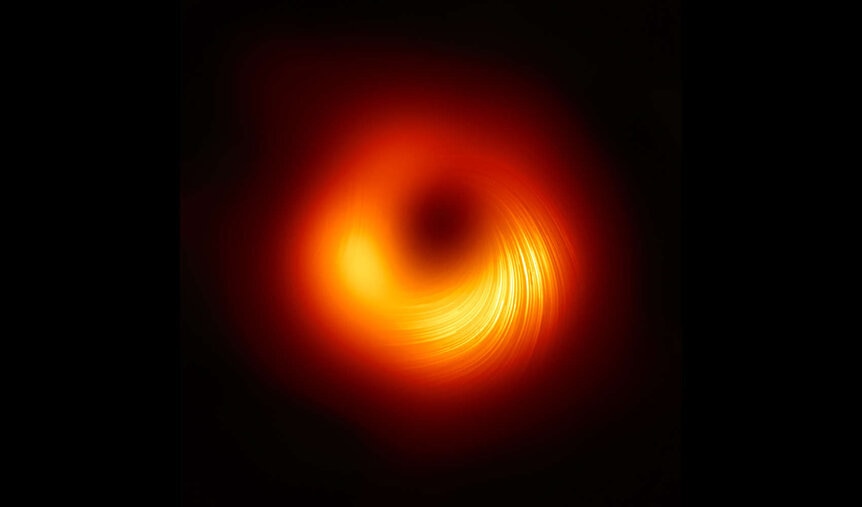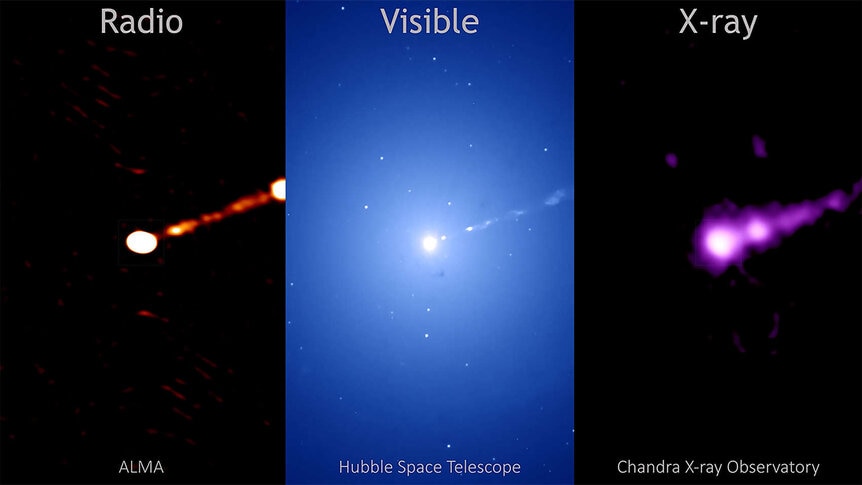A fleet of telescopes on and above Earth zooms in on M87’s enormous black hole

Fifty-five million light years from Earth lies a monster.
It's a supermassive black hole, one with the mass equivalent of 6.5 billion Suns. It may be hiding itself among the stars of the huge elliptical galaxy M87, but it does a bad job of it. It's right in the center of the galaxy, the first place we'd look. Also, as it feeds, it blasts out radiation from the material falling into it, making it bright and obvious.
And it's also roaring. Two long jets of material are screaming away from it at a high percentage the speed of light; fed, focused, and fired by magnetic fields wrapped up in the material as it swirls around The Point of No Return.
We're lucky it's not very coy about attention. Because we're watching it, carefully, using a literal fleet of observatories both on and above the Earth.
You've likely seen the incredible image of material around M87's central supermassive black hole. The first was released in 2019, and was a revolution, showing the shadow of the back hole, the region around it where even photons can't orbit stably. Not long after astronomers saw changes in that material over time. And then, just weeks ago, a second version was published showing the effects of the ridiculously powerful magnetic field wrapped up in that matter.
All that data were taken by in 2017 radio telescopes scattered across Earth, combining their power to achieve the keen eyesight of a virtual telescope the size of a planet, dubbed the Event Horizon telescope.
At very nearly the same time, 19 observatories that monitor light across the electromagnetic spectrum, from radio waves to gamma rays, also observed the black hole. This type of campaign, called synoptic observations, helps astronomers understand what's going on note only at different energies but at different spatial scales around the black hole as well.
For example, the mass of the black hole is only known with an uncertainty of about 10%. The mass is determined by how it's swallowing all the material seen in those images. But physical models have to be used to determine the mass, and those make assumptions about some characteristics that aren't well known. Observations at different wavelengths can help nail those down better.
Also, that jet of material flowing away from the black hole is a mystery. The details of how exactly the fierce magnetic field winds up in the material orbiting the black hole isn't well understood, nor how it actually accelerates the jets away from the intense gravity of the black hole. And what happens inside the jet as the material floods away at such high speeds? We see clumps in the jet, and in some places faster clouds of gas slam into slower moving material ahead of them, creating enormous shock waves. What effect does that have?
And the spatial scale, yikes. The jet starts very close to the black hole, just some dozens of billions of kilometers from it, but extends for 200,000 light years — it's longer than our own Milky Way is! You need to use different telescopes that look at all these scales —that have different magnifications, if you like — to even have a prayer of understanding what's going on in this maelstrom.
The near-simultaneous observations of the black hole and jet were made using the Event Horizon Telescope, but also Hubble (visible light), Chandra (X-rays), Fermi (gamma rays), Swift (X- and gamma rays), NuSTAR (X-rays), and more. For a brief moment, some of the most powerful eyes astronomers have were all locked on M87.
All those data have been released to the astronomy public so that eager scientists can attack them and use them to hone their theoretical models. But the team (over 750 scientists from almost 200 institutions and 32 countries) was able to make some preliminary conclusions based on what they've seen.
For one thing, activity from the supermassive black hole was at a historic low during the observations. Material falls into the black hole at different rates. Sometimes it's a steady stream and its brightness is steady as well, sometimes a big gas cloud or star falls in and it brightens considerably, and sometimes less matter falls in and the black hole is temporarily starved, so it dims. The low activity was in some ways helpful, since it allowed astronomers to get observations so close in (it will also be helpful when we get similar observations to this for our own local supermassive black hole, Sgr A*, too).
We're pretty sure that the environment around black holes can produce incredibly high-energy cosmic rays as well, which are subatomic particles like protons and helium atom nuclei moving at very nearly the speed of light. Cosmic rays can hit our atmosphere and subtly affect the chemistry of the air and rocks on the surface. They also are a key to understanding other subatomic particles, and the very fact that they exist can tell us about how black holes generate them. Some are likely made in those jet shock waves, but some may come from close to the black hole.
Cosmic rays can make gamma rays as slam around inside material, and the new observations looked at that extremely high-energy end of the spectrum. They found very little gamma-ray light coming from close in to the black hole, which is a bit surprising. Does that mean the jet dominates in making cosmic rays? Or is this low gamma ray count due to the low activity seen from the black hole?
Hopefully, the new data will be extremely helpful for astronomers trying to figure out what all the moving parts here are doing. It's incredibly complex, and we're only just getting started understanding it.
One thing I know for sure is that this isn't enough to satiate astronomers. In a way they are very much like the objects they study: Surrounded by massive amounts of data, voracious consumers of it, always wanting more, and sometimes blasting out information and conclusions with high energy and at high speeds.
So stay tuned. A new jet of information from these observations will no doubt soon be headed our way.































